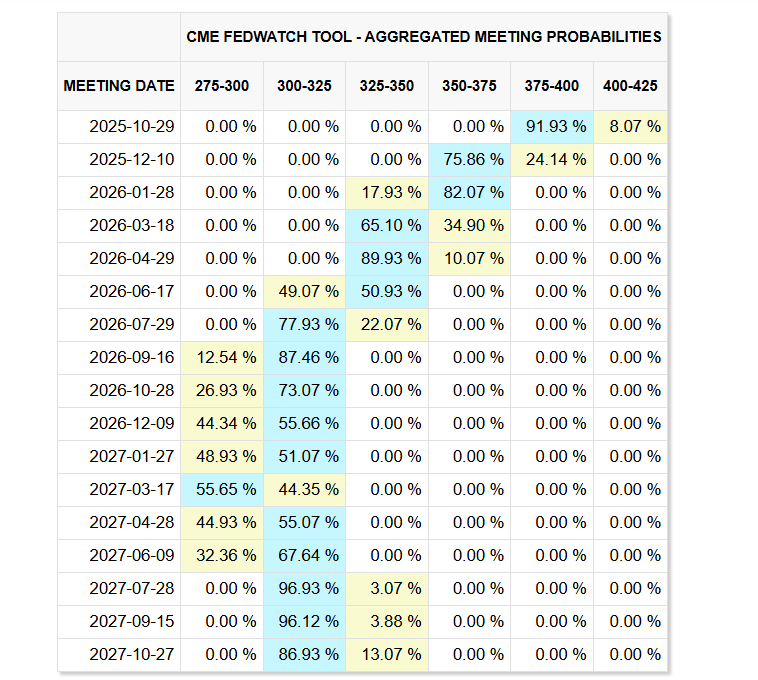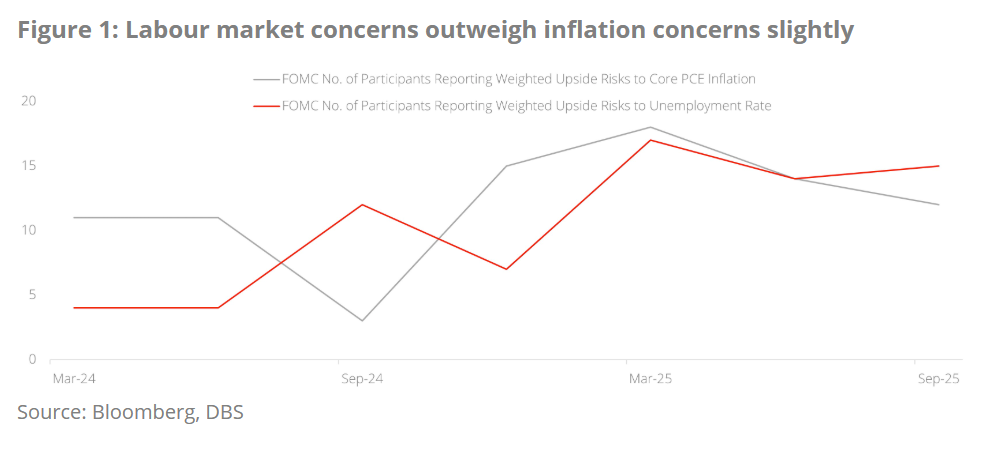Fed rate cut has prompted a market repricing that lifts risk assets while creating short-term pressure in crypto markets; institutional inflows support Bitcoin despite weakness in the labor market, suggesting any correction may be short-lived if easing continues.
-
Fed rate cut increased probability of further easing, prompting mixed crypto price action
-
Bitcoin faced selling pressure even as ETF inflows signaled ongoing institutional demand
-
Bitcoin ETFs saw $977 million in inflows last week; total crypto inflows reached $1.9 billion (CoinShares)
Fed rate cut crypto impact: Bitcoin dips as labor market softens; ETF inflows persist. Expert analysis, data, and actionable implications for investors—read more.
Fed Chair Jerome Powell warned of labor market weakness after Fed’s first rate cut in nine months, as futures markets bet on more easing ahead.
Fed Chair Jerome Powell reiterated the Federal Reserve’s balancing act, saying policymakers must weigh price stability against the employment mandate after last week’s 25 basis-point cut. Powell noted growth has moderated and highlighted higher near-term inflation alongside signs of weakening employment.
Powell said: “The unemployment rate is low but has edged up. Job gains have slowed, and the downside risks to employment have risen. At the same time, inflation has risen recently and remains somewhat elevated.”
He also commented that clearer trade policy suggests tariffs may produce only a “one-time pass-through” to inflation, a softer view than earlier warnings that tariffs could sustain higher price pressure later in the year.
Vice Chair Michelle Bowman expressed similar concern at a separate event, noting the U.S. economy’s resilience but flagging a weakening labor market and softer growth. The Federal Open Market Committee (FOMC) voted to cut rates by 25 basis points — the first reduction in nine months — and markets now price additional easing later in the year.

Fed funds futures are pricing in a strong likelihood of additional rate cuts in October and December. Source: CME Group
DBS Bank described the meeting as full of “dissonance and contradictions,” noting officials’ forecasts for faster GDP growth and lower unemployment while simultaneously acknowledging downside risks to jobs.
Related: Bitcoin struggles at $113K as Fed’s Bowman hints at faster rate cuts
What is the Fed rate cut’s impact on crypto markets?
Fed rate cut is reshaping short-term risk pricing: it supports risk assets broadly but has triggered profit-taking in crypto. Institutional demand, however, remains robust—ETF flows and fund-level inflows indicate potential for a quick rebound if markets confirm a sustained easing cycle.
How will Bitcoin react if the Fed signals more easing?
Bitcoin historically benefits from easier monetary policy as liquidity and risk appetite rise. Recent data show $977 million in Bitcoin ETF inflows last week and $1.9 billion in total crypto inflows ( CoinShares ), which supports prices even amid short-term corrections.
Analysts including The Kobeissi Letter and market strategist Heisenberg point to divergences between Bitcoin and equities that often converge. If easing expectations firm, BTC may realign with equity strength, potentially driving rapid recoveries.

The Fed’s inflation concerns have taken a back seat to rising risks in the labor market. Source: DBS
Why are institutional inflows important now?
Institutional inflows signal conviction beyond retail momentum. CoinShares data showing heavy ETF subscriptions suggest asset managers and institutional investors are positioning for a multi-step easing cycle. That dynamic can provide a price floor even when macro headlines weaken sentiment.
Economist Timothy Peterson observed that the current path of rate reductions is historically unusual and that more aggressive easing would likely “jolt Bitcoin and altcoins up substantially.” This expert view underscores the sensitivity of crypto to changes in monetary policy expectations.
Frequently Asked Questions
Will the Fed cut rates again in 2025?
Futures markets currently price a strong chance of additional cuts in October and December 2025, though the Fed has not committed to specific dates. Policymakers emphasize data dependence and trade-offs between inflation and employment.
How should investors react to crypto volatility after a Fed cut?
Maintain risk management: reassess position sizing, monitor ETF flow data and macro labor reports, and use stop-losses or hedges. Consider dollar-cost averaging to mitigate timing risk during a volatile repricing.
Key Takeaways
- Monetary policy matters: The Fed rate cut has repriced risk assets but introduced near-term uncertainty for crypto.
- Institutional flows support markets: Strong ETF inflows ($977M to Bitcoin ETFs; $1.9B total crypto inflows) provide a potential price floor.
- Data-driven approach: Monitor labor market and inflation releases and use disciplined risk management to navigate volatility.
Conclusion
In sum, the Fed rate cut has created a mixed environment for crypto: liquidity tailwinds coexist with labor-market concerns. Institutional flows and expert analysis point to resilience, but investors should stay data-focused and use robust risk controls. COINOTAG will continue to track developments and provide timely analysis.
Magazine: 7 reasons why Bitcoin mining is a terrible business idea
